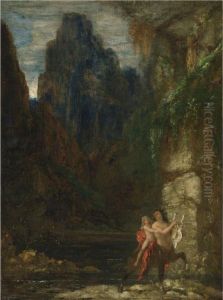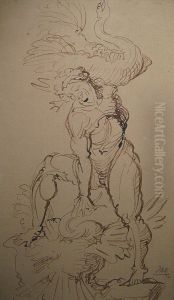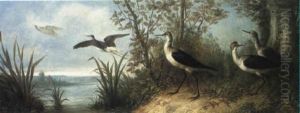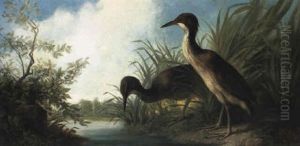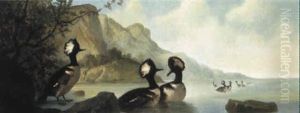Isidore De Rudder Paintings
Isidore De Rudder was a distinguished Belgian artist, born in 1855 and passing away in 1943. His contributions to the world of art are primarily noted in the realm of sculpture, where he left an indelible mark through his mastery of form and composition. De Rudder's work is emblematic of the Art Nouveau movement, which swept through Europe at the turn of the 20th century, emphasizing intricate designs, flowing lines, and often incorporating motifs from nature.
De Rudder trained at the Royal Academy of Fine Arts in Brussels, where he honed his craft under the guidance of established artists of the time. His education and natural talent equipped him with the skills to explore and innovate within the sculptural medium. Throughout his career, De Rudder engaged with various materials, including bronze, marble, and ivory, showcasing his versatility as an artist.
His oeuvre includes not only standalone sculptures but also decorative elements for buildings and monuments, illustrating his ability to work on different scales and for a variety of purposes. One of the hallmarks of De Rudder's work is his ability to imbue his sculptures with a sense of life and dynamism, a testament to his understanding of human anatomy and his sensitivity to the natural world.
Despite the acclaim he received during his lifetime, Isidore De Rudder's name is not as widely recognized today as some of his contemporaries. However, his contributions to the Art Nouveau movement and to Belgian art more broadly have not been forgotten. His works continue to be studied and admired for their beauty and craftsmanship, ensuring that De Rudder's legacy endures in the annals of art history.
